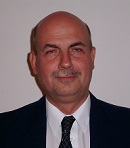
Plenary Lecture
Ca2+- Activated Chloride Current in Ventricular Myocardium

Professor Péter P. Nánási
Department of Physiology
University of Debrecen
Hungary
E-mail: nanasi.peter@med.unideb.hu
Abstract: Cardiac chloride currents are important contributors to the repolarization reserve of the ventricular myocardium, however, their role is controversial and their properties are poorly understood. In mammalian cardiac tissues they are represented by three major types including the cAMP-dependent ICl (CFTR), the voltage-gated ICl (ICl-Vol, CLC) and the Ca2+ activated ICl (ICl-Ca). ICl-Ca is mediated by TMEM16A and Bestrophin-3 channel proteins and is involved in the early repolarization of ventricular action potential. The contribution of ICl-Ca to the formation of life threatening arrhythmias has been proposed in cardiac pathologies where intracellular Ca2+ concentration ([Ca2+]i) increases, while others reported protective effect of the current. Using cellular electrophysiological techniques combined with the application of Ca2+-sensitive dyes the profile of ICl-Ca was studied systematically under various conditions designed to change [Ca2+]i. ICl-Ca was identified as a 9-anthracen-carboxylic acid-sensitive current. The expression of TMEM16A and Bestrophin-3 was studied in canine and human ventricular myocytes. The profile of ICl-Ca under action potential voltage clamp conditions contained an early fast outward and a late inward component, overlapping early and terminal repolarization, respectively. The dominant outward component shortened action potentials, reduced beat-to-beat variability of action potential duration and provided defense against early depolarizations. Ca2+-entry through L-type Ca2+ channels was essential for activation of ICl-Ca. ICl-Ca was moderately reduced by ryanodine, fully abolished by the Ca2+-chelator BAPTA, while application of Bay K8644, isoproterenol, and faster stimulation rates increased the amplitude of ICl-Ca. TMEM16A and Bestrophin-3 showed strong co-localization with one another and also with Cav1.2 channels in both canine and human ventricular myocytes. The data indicate that activation of ICl-Ca in canine ventricular cells requires Ca2+-entry through the adjacent L-type Ca2+ channels and is only augmented by the Ca2+-release from the sarcoplasmic reticulum. Substantial activation of ICl-Ca requires high Ca2+ concentration in the dyadic clefts which can be effectively buffered by BAPTA, but not EGTA.
Brief Biography of the Speaker: Péter P. Nánási was born in 1956, at Debrecen, Hungary. He graduated from the University Medical School of Debrecen with an M.D. degree in 1980. He obtained Ph.D. degree in 1992, and he received the D.Sc. degree from the Medical Branch of the Hungarian Academy of Sciences in 1999. From 1980, he has been working at the Department of Physiology, University of Debrecen - as a full professor since 2002. At the same time, he is the chairman of the "Department of Oral Physiology and Pharmacology" at the Faculty of Dentistry since 2001. During his career, he has spent 2 years in the United States, at the Children's Hospital Medical Center and at the Department of Pharmacology and Cell Biophysics, University of Cincinnati, Ohio with professors David A. Lathrop and Shirley H. Bryant. His research interest covers the physiology and pharmacology of cardiac ion channels, including the frequency-dependent interactions, regulation of action potential duration, and cellular mechanisms of antiarrhythmic and proarrhythmic actions. His most important scientific achievements were the description of the two stable levels of the resting potential in skeletal muscle fibers (Pflügers Arch. 1989; 414: 157-161), demonstration of reopening of calcium channels during the epicardial action potential (Cardiovasc. Res. 2003; 58: 66-75 and Acta Physiol. 2004; 180: 39-47), characterization of the action potential voltage clamp fingerprints of the major ion currents in canine ventricle (Acta Physiol. 2007; 190: 189-198), and contributing to the elucidation of reverse rate-dependent nature of cardioactive drug actions (Cardiovasc. Res. 2009; 84: 237-244 and Basic Res. Cardiol. 2010; 105: 315-323). He is the member of the Physiological Society, British Pharmacological Society, European Working Group on Cardiac Cellular Electrophysiology and the International Academy of Cardiovascular Sciences. He has published 157 full length papers (IF=431, Hirsch index=29) and 9 book chapters in English language. He was also involved in more than 240 lectures and posters in the field of cellular cardiac electrophysiology.